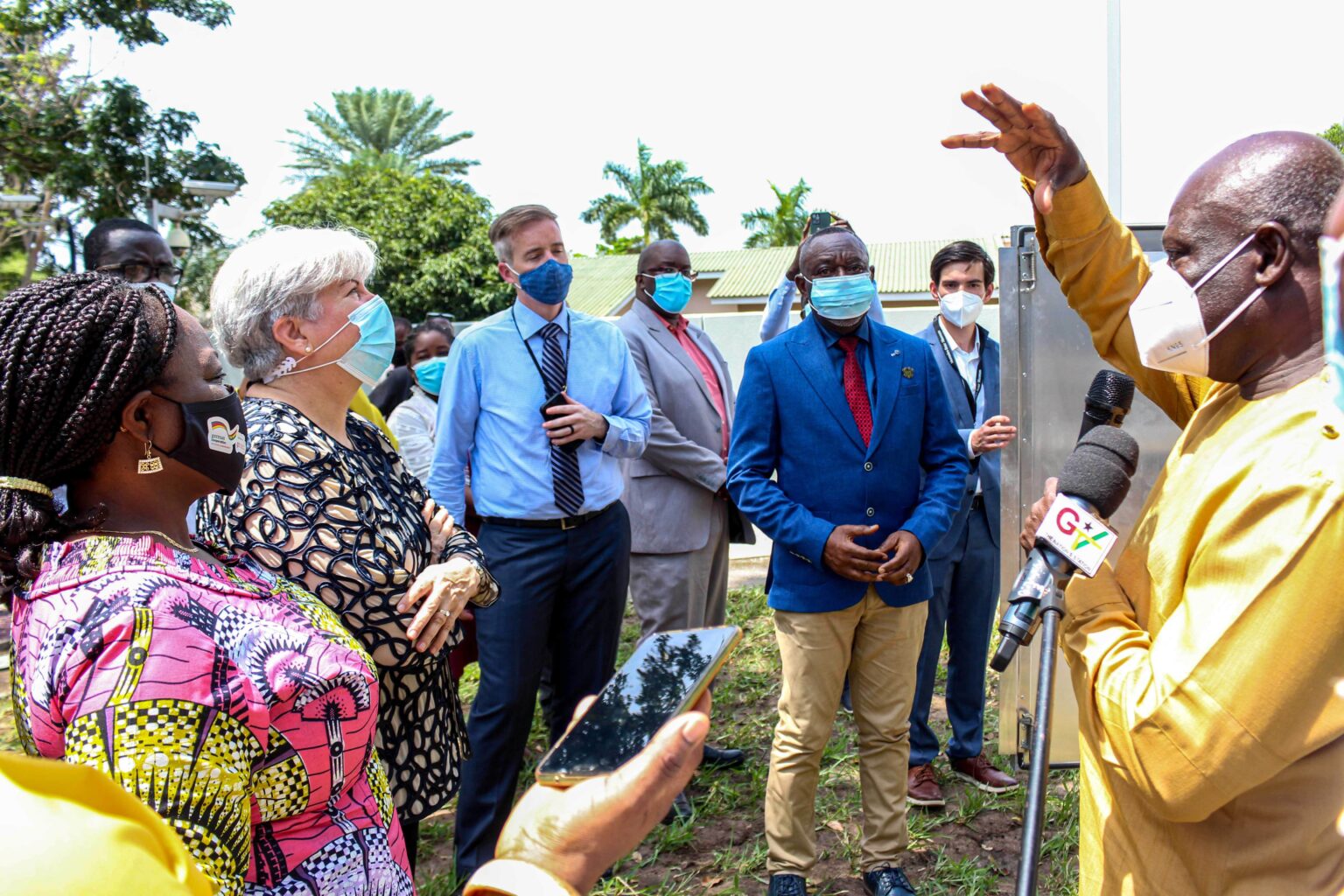Three new Air Quality Monitoring stations were installed in Accra last week, expected to generate real-time data on air quality for public awareness and policy formulation.
The monitors, which were installed as a joint initiative between the Ghanaian Environmental Protection Agency and the US embassy in Ghana, will be positioned at the University of Ghana Campus, the Adabraka St Joseph Roman Catholic Basic School compound and at the US embassy in Accra.
Henry Kokofu, the executive director at the EPA, said ambient and household air pollution were currently the most significant environmental contributors to premature deaths in Africa, outpacing that of malaria and HIV. He added that at present, 100 per cent of the population of Ghana, both in urban and rural areas, was exposed to particulate matter concentration levels exceeding the WHO guidelines.
“There is, therefore, the urgent need to control the current state of air pollution, related illnesses and deaths,” Kokofu said.

Inauguration of Air Quality Monitoring Stations
Stephanie Sullivan, the US Ambassador, said the embassy had decided to partner with the EPA to establish the monitoring stations so as to inform policy decisions that will help provide a cleaner environment for all people living in the capital and beyond.
“The increasing global trend of urbanisation as we see in the Greater Accra Region and many U.S. cities continues to create greater concentrations in air pollutants, with detrimental health effects,” she said.
The monitoring stations, she added, would help scientists, researchers, government officials and the public to understand the data in real time “as we work together to identify and mitigate sources of harmful air pollution.”
Emmanuel Appoh, the Local Focal Person and the World Health Organization Temporary Advisor on Air Quality Guidelines Development, said that combined efforts in Ghana over the past 15 years, including monitoring stations set up in Accra, Tema, Kumasi, Takoradi and Tarkwa to monitor sulphur dioxide, carbon monoxide, black smoke and Total particulate matter, had been able to reduce the pollution levels from 78 particulate matter to 44.
“However, we have to work harder to get to the 35 under target three and then 25 under target two of the WHO requirement,” he said.